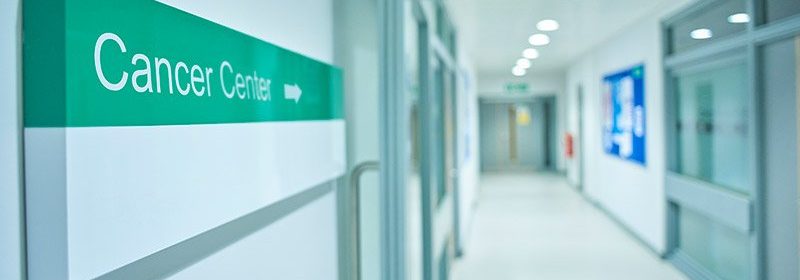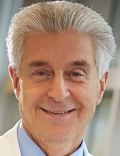In a Possible First, Primary Care Practice Opens in Cancer Center

Dr Nicholas Petrelli
Patients with cancer will now be offered primary care in the same place as they have their cancer treatment and management, in a development in Delaware that appears to be a first in the United States.
This combination of primary care and multidisciplinary cancer care “all under one roof is highly unusual among major cancer centers,” said Nicholas Petrelli, MD, medical director at the Helen F. Graham Cancer Center, Newark, Delaware, in a press statement.
The organization, which is a National Cancer Institute-designated center and part of the regional ChristianaCare system, said it was “among the first…in the nation” to do so. But that claim was a cautious hedge. “We believe we are the very first to actually do this,” a spokesperson told Medscape Medical News in an email.
Like most major US cancer centers, Graham already offers “urgent” or acute primary care to patients who have suddenly arising cancer-related complications such as neutropenic fever, pain, and dyspnea. The goal of such care is to avoid costly — and uncomfortable — emergency department admissions for sick patients.
However, the new offering consists of “nonurgent” primary care for chronic illness such as hypertension, diabetes, and other conditions that every internist and family practitioner sees — and which can impact cancer treatment in some cases.
The news was met with hope, enthusiasm, support, and skepticism by a number of experts asked for comment by Medscape Medical News.
“That’s absolutely outstanding,” said William Dunson, MD, of Huntsman Cancer Institute in Salt Lake City, Utah, about Graham’s initiative. “If they really have the intent to do full primary care, I’m impressed.”
Dunson, who is medical director of acute care service, said this effort is a “very noble undertaking” because primary care generally “isn’t financially viable.”
Leading centers such as MD Anderson in Houston and Memorial Sloan Kettering in New York City have “massive” acute care clinics, he observed. “But none of the bigger centers are claiming they are doing primary care or would want to do primary care. Most cancer centers don’t want to be in that business,” he added.
Dunson also questioned whether Graham’s service would follow patients temporarily or “longitudinally,” with the latter being a hallmark of primary care.
Ana Maria Lopez, MD, MPH, a medical oncologist at Jefferson Health New Jersey and president-emeritus of the American College of Physicians, likes the concept at Graham. “Cohabiting the same physical space would help facilitate coordinated care,” she said. “High blood pressure or diabetes don’t take a break while cancer is a focus. They impact each other,” Lopez explained.
Katherine O’Brien, a patient with metastatic breast cancer in Illinois, also saw upsides: “What Graham is doing can only help primary care providers gain a more in-depth understanding of cancer, its treatment, and cancer patients’ realities.”
Patients can be alienated by a provider’s lack of familiarity with cancer, said O’Brien, who has traveled as far as Boston for care.
A few years into her treatment, O’Brien told her local primary care physician in suburban Chicago that she had recently gone to Dana Farber for a consult. “He asked me if Dana Farber was any relation to Bill Farber in Rockford.”
She eventually switched to a provider at Chicago’s Northwestern University where her primary care is in the same complex as the Lurie Comprehensive Cancer Center, but not in the same building or suite of offices.
O’Brien, who had a de novo breast cancer diagnosis in 2009, also praised primary care physicians in a very personal way. “There are many, many fine PCPs with an excellent grasp of oncology…like my mom’s doc who instantly realized she had inflammatory breast cancer, a rare presentation.” Her mother was diagnosed in 1981 and died in 1983.
Whether or not the Graham Cancer Center in Delaware can actually provide full primary care (without big financial losses), improve provider coordination, and deepen their primary care provider’s understanding of cancer remains to be seen.
The program just started about 6 weeks ago, medical director Petrelli said.
What the organization describes as a “primary care practice” is modest, occupying a single office in their oncology express unit, an urgent care service for cancer and treatment-related complications. The practice footprint is a small sliver of the 270,000 square foot Graham Cancer Center, which occupies two multistory buildings.
The practice is staffed by a single nurse practitioner and runs from 8 AM to noon, Monday to Friday, with plans to extend hours eventually.
The nurse practitioner, Debra Delaney, RN, MSN, who has a background in trauma and acute care, had seen “a couple of patients last week,” said Petrelli. “We’re advertising it slowly,” he explained, to avoid “opening the floodgates.”
In an informal survey of patients, the center concluded that “as many as 30%” of its patients with cancer did not have a primary care physician. But Petrelli said the number could be as low as 15%; either way, the pilot program is worth doing, he said.
The center has approximately 3300 new cancer cases a year, so at most they could accrue between 495 to 990 new primary care patients.
“I’m fairly certain it’s going to work in view of what we’ve seen so far,” said Petrelli.
How Urgent Care Makes Money
There is a clear, documented need for urgent care clinics at cancer centers — unlike, perhaps, onsite primary care for chronic conditions.
For example, at the Harold C. Simmons Comprehensive Cancer Center, Dallas, Texas, after the urgent care clinic was established in 2012, emergency department visits among its patients fell by half, research shows.
That matters because patients with cancer are among the highest healthcare resource users in the United States, which was one of the drivers behind the creation of these less costly acute care clinics, which are widely credited as being effective.
Urgent care is not true primary care, said Dunson from the Huntsman Cancer Institute. He and a team of four advanced practice clinicians tend to primary care issues like hypertension, but only when they are “out of control.” And patients are liaised back to their primary care provider as soon as safe and possible.
Dunson, who is an internist, also said he would one day like to run a primary care practice at a cancer center, but it does not seem feasible at this time.
What is feasible is acute care. Huntsman’s service is available 8 AM to 7 PM, Monday to Friday, and is “like a clinic, ER, and ICU all combined into one service,” with the goal of not just avoiding ER visits but admissions to hospital, he said.
“Our service costs the [University of Utah] hospital money, but we make it up in other areas,” he observed. Laboratory tests, CT scans, MRIs, EKGs, echocardiograms, intravenous antibiotics and fluids for acute care patients allow the hospital to generate revenue in other departments like radiology and compensate for operating loss of the service.
There are many acute care clinics in the United States but “all are slightly different,” he said.
Moffitt Comprehensive Cancer Center in Tampa, Florida, has been closest in combining acute care and primary care but probably still doesn’t qualify as doing so, according to Dunson.
Moffitt urgent care has 27 dedicated beds and is open 24 hours a day, 7 days a week for cancer and treatment-related complications.
However, the Florida provider explicitly says that potential urgent care patients “are advised to call their primary care provider first if they have medical [noncancer-related] concerns.”
Also, Moffitt has an ambulatory internal medicine clinic, which sees a mix of patients, including those who are “high-risk” and need to be assessed prior to surgery as well as patients actively receiving cancer treatment who also need smoking cessation, diabetes or blood glucose management, thyroid care, or blood pressure management, said a spokesperson.
Thus, there is a limit to exactly what Moffitt provides in its primary care clinic.
Jefferson’s Lopez says that these various models are all “great” because they seek to integrate care, which is especially helpful when other illnesses impact cancer treatment.
The “old model” of a primary care physician simply referring a patient to a cancer center or oncologist “may not work so well anymore” because of the potential for “disjointed” care in many cases, she added.
The Black Box Effect
Misunderstanding between oncologists and primary care providers regarding management of comorbidities in patients with cancer may occur in the realm of the finer details, research indicates.
For example, a 2019 study of staff at three academic hospitals in New York City showed primary care providers and medical oncologists agreed that diabetes should be actively managed during cancer treatment. But more primary care providers felt looser glycemic control was allowable (56.8% vs 37.5%; P = .05) and that it was okay for patients to miss some diabetes-related visits (80.6% vs 56.3%; P = .01).
The “main advantage” with having primary care linked to a cancer center is that it facilitates communication to address such issues, commented Archana Radhakrishnan, MD, an internist at Michigan Medicine in Ann Arbor in an email to Medscape Medical News.
However, even when there is “team-based” cancer care that includes primary care, patients “often don’t know who to turn to” said Radhakrishnan, who has practiced in clinic settings with various models of cancer survivorship care.
“When there is better communication between the providers, such as identifying which provider will do what, that then can be passed down to the patient. Patients then know who to turn to, and this avoids a lot of uncertainty,” she said.
Trust between referring primary care physicians and oncologists about sharing a patient is also important, said Huntsman’s Dunson.
“We call it the black box effect — you send your patient as a primary care doc to the cancer center or major academic center and the patient disappears into a black box and you never see them back,” he acknowledged.
“It’s not always the cancer center’s fault. Sometimes it’s the patient who grows attached to their oncologist and is fearful to leave that embrace.”
In the past in the United States, there has been a blurring of the lines between urgent care, primary care, and cancer care, suggested Dunson.
“Historically, prior to the subspecialization of cancer care, the medical oncologist would not only treat the cancer, but the complications, and would also fill in as a surrogate primary care provider at the same time. Those old school oncologists are a dying breed now,” he commented.
Healthcare reform has limited oncologists’ time with patients and now “they don’t even very often handle the complications of cancer and treatment,” he said, referring to growing role of advanced practice clinicians in urgent care.
Delaware’s ChristianaCare sees another opportunity in the relationship between oncology and primary care. “We also are looking at the possibility of eventually establishing a fellowship training program in cancer medicine for our family medicine providers,” said Cydney Teal, MD, chair of the Department of Family & Community Medicine, adding that “to our knowledge, there are no fellowships or specialty training for providers who specialize in both primary as well as oncologic care.”
Nick Mulcahy is an award-winning senior journalist for Medscape, focusing on oncology, and can be reached at [email protected] and on Twitter: @MulcahyNick
Follow Medscape on Facebook, Twitter, Instagram, and YouTube.
Source: Read Full Article
